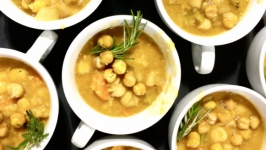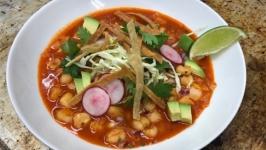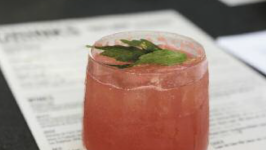Enoteca's Charcuterie Board
Epicures and aesthetes already have a soft spot for Ketchum’s Enoteca. In the late afternoon, the wine bar’s large front windows let in a flood of natural light that drapes over glasses of Rosé and Lambrusco lining the long bar. In the bustling thick of dinner service, Edison light bulbs scatter soft yellow light over bottles of Barbera and plates of pork osso bucco.
But under all of Enoteca’s simple, rustic charm lies a less obvious treasure. On the small plates menu, below a selection of salads and cheese plates, rests an unassuming appetizer: salami and prosciutto. Though it reads like a sparse charcuterie plate, it’s actually one of the most interesting culinary finds on the menu.
On a recent visit, a black slate board came piled with shavings of lavender-cured pork shoulder, prosciutto, speck (cured fatback or lardo), a thick triangle of house-made country pâté, a mound of house-smoked salmon, rounds of salami, wedges of bread, pickled red onions, gherkins and mustard. As our server enthusiastically explained, most of the meats are made at Enoteca’s parent restaurant, Ketchum Grill. After hearing this, I knew I had to go on an adventure to see for myself.
Chef and owner Scott Mason welcomed me enthusiastically, leading me through Ketchum Grill’s buzzing kitchen and into a walk-in fridge filled with dangling meats. Mason said that Ketchum Grill has been making its own sausage since the restaurant opened 23 years ago, but they only started experimenting with other products like prosciutto and salami around five years ago. Pointing to a pink marbled mass, Mason explained that he doesn’t used pork leg to make his prosciutto. “I’m doing boneless butts in the prosciuttos and that seems to work out pretty well and they have a nice amount of fat on them,” said Mason.
Ketchum Grill also makes its own guanciale (cured pork jowl), along with brown sugar bacon, salami, sausage and pancetta (cured, unsmoked pork belly). “It’s kind of an unsmoked bacon,” said Mason. “Pancetta’s generally rolled and hung and dried, but for us it just works better to leave it in a slab like this. We cure it and then dry it for a short time and then we freeze it, because we do these huge batches and it’s just easier for us.”
Examining a hunk of cured meat swinging from a string, Mason explained that he’s also experimenting with lamb prosciutto. “The lamb tends to be kind of strong in flavor and a lot of people don’t like it because they say it’s too lamby,” said Mason. Though both Ketchum Grill and Enoteca utilize these housemade meats on their menus, they also source cured meat products from elsewhere. Mason says keeping the staff up-to-date on what’s made in house and what’s not can be a challenge. “We try to get them to learn which ones are ours and which ones aren’t,” said Mason.
But there’s one charcuterie product that no one can confuse for being store-bought: the lavender-cured pancetta.”We actually ordered too much dried lavender so we’ve been using dried lavender in the cure and just rubbing salt and sugar and pepper on them and letting them sit,” explained Mason. “They get a really nice kind of floral smell to them.”










